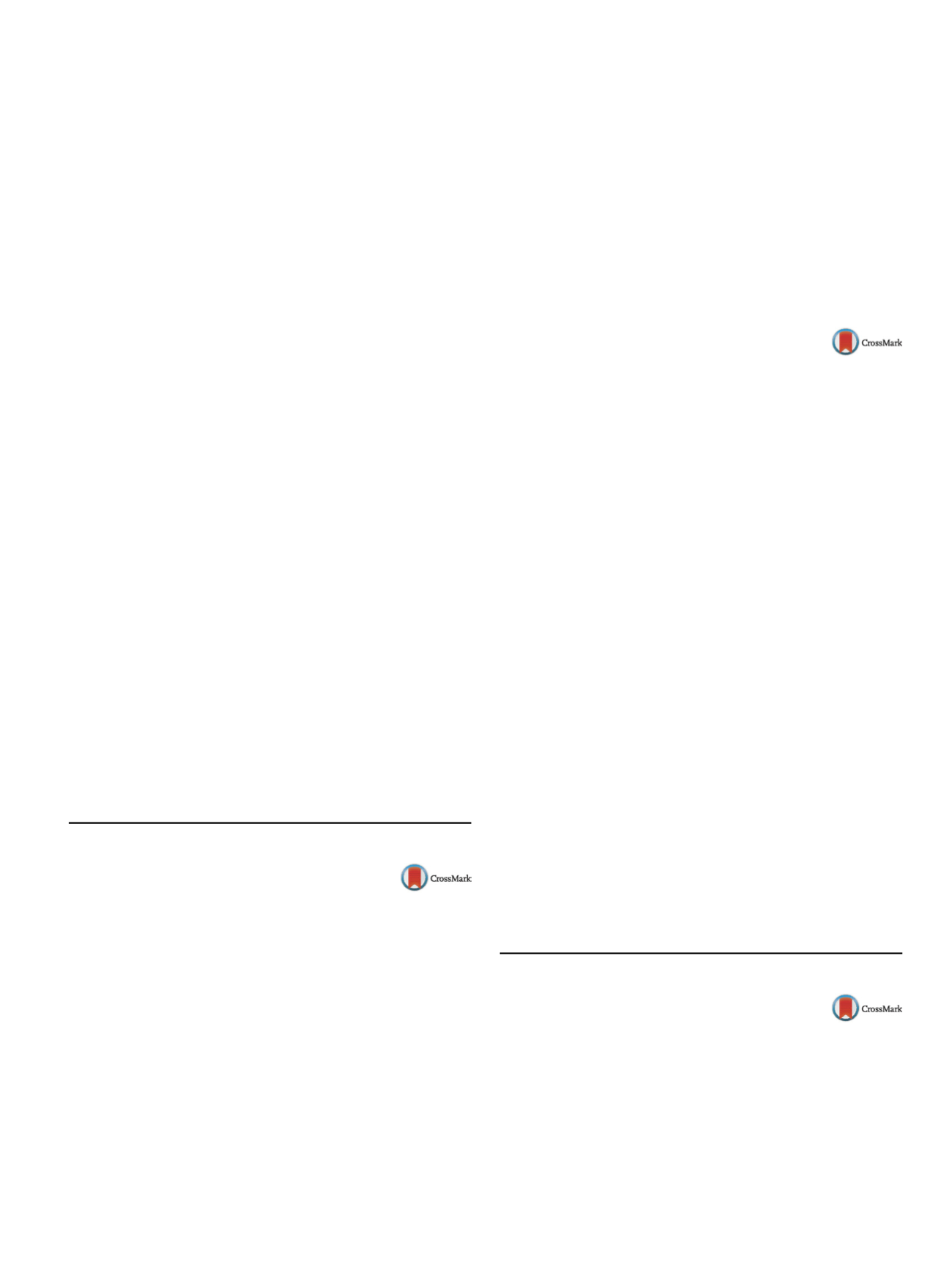

25th European Congress of Psychiatry / European Psychiatry 41S (2017) S8–S52
S31
S.E. Setterberg
∗
, E. Nissen , W. Jonas , M. Niemi
Karolinska Institute, Department of Reproductive Health, Stockholm,
Sweden
∗
Corresponding author.
Introduction
Transition into parenthood is a demanding phase in
life and exposes the becoming parents to vulnerability for depres-
sion, anxiety and stress. Perinatal mental health problems are a
major public health issue and many women suffering from depres-
sion during their first year after delivery. High levels of stress during
pregnancy are associated with adverse psychological and physi-
ological outcomes for the infant and parents. There seems to be
an intergenerational transmission of mental health from parent to
infant. The current study evaluated the effectiveness ofmindfulness
intervention during pregnancy in reducing depression symptoms,
anxiety and perceived stress in parents-to-be.
Objectives
Assess whether the mindfulness will improve interac-
tion between mother-infant at 12 months.
Methods
Perceived stress scale and Edinburgh postnatal depres-
sion scale used tomeasure stress and depression during pregnancy.
Parent child early relational assessment assessed mother-infant
interaction.
Results
Inhibited parent-infant relationships were more com-
mon in the control group comparing to the mindfulness
intervention group. This is in line with previous research on peri-
antal depression, anxiety, and stress, showing more dysfunctional
dyads. A depressed mother has reduced capability to be alert
to her baby’s signals, which is necessary for appropriate parent-
infant relationship to occur. The cumulative effect of impaired
parent-infant relationship is a “depressed dyad” of mother and
infant.
Conclusion
Mindfulness intervention reduced depressive symp-
toms, anxiety, and perceived stress in pregnant women. At 12
months mother-infant relationship assessment, the mindfulness
intervention group dyads showed a more attuned mother-infant
interaction.
Disclosure of interest
The authors have not supplied their decla-
ration of competing interest.
http://dx.doi.org/10.1016/j.eurpsy.2017.01.149Symposium: ICD-11 Classification of mental and
behavioural disorders–Recent developments
S076
ICD-11: Example of psychotic
disorders
W. Gaebel
Heinrich-Heine-Universität Düsseldorf, Germany
The revision of the current classification criteria for disorders issued
by the World Health Organization (WHO) (International Classifi-
cation of Disorders, ICD-10) is underway and will also include a
revision of the classification criteria of the mental and behavioural
disorders. Working groups for specific groups of mental disor-
ders had produced suggestions for revised diagnostic criteria and
included a working group on schizophrenia and other primary
psychotic disorders. This presentation will focus on this group of
mental disorders. Major changes suggested were an introduction
of symptom and course specifiers, the inclusion of cognitive symp-
toms and a de-emphasising of the so-called first rank symptoms
of schizophrenia, a cross-sectional approach towards the classi-
fication of schizoaffective disorder and a reorganization of the
acute psychotic disorders. Initial internet-based field trials showed
some incremental improvements of diagnostic reliability, but more
crucial for an adjustment of the revised classification criteria will
be the expected results of the upcoming clinic-based field trials.
Disclosure of interest
Unterstützung bei Symposien/Symposia
Support.
– Janssen-Cilag GmbH, Neuss
– Aristo Pharma GmbH, Berlin
– Lilly Deutschland GmbH, Bad Homburg
– Servier Deutschland GmbH, München
– Fakultätsmitglied/Faculty Member
– Lundbeck International Neuroscience Foundation (LINF), Däne-
mark
http://dx.doi.org/10.1016/j.eurpsy.2017.01.150S077
SM-5, ICD-11, RDoC and the future of
psychiatric classification
M. Maj
Department of Psychiatry, University of Largo Madonna delle Grazie,
80138 Naples, Italy
The publication of the DSM-III in 1980was intended to be a reaction
to the evidence of the embarrassingly low reliability of psychiatric
diagnoses, which was perceived as a major threat to the credibil-
ity of the psychiatric profession. The aims of the DSM-III project
were actually two. First, the reliable definition of the diagnos-
tic categories was expected to lead to the collection of research
data that would validate those diagnostic entities and in particu-
lar elucidate their etiopathogenetic underpinnings. Second, there
was an expectation that, by increasing reliability, communication
among clinicians would be improved and clinical decisions made
more rational. Today, one could say that the first aim of the project
has not been achieved, while the fulfilment of the second aim has
never been tested appropriately. The crisis of confidence in the DSM
paradigm, clearly emerging from the debate following the publica-
tion of the DSM-5, has led on the one hand to a renewed emphasis
on clinical utility, which is featuring prominently in the ongoing
process of development of the ICD-11. On the other hand, it has
led to a radical attempt to reform psychiatric nosology starting
from neurobiological and behavioural phenotypes. This attempt
does have its weaknesses, but may also represent a stimulus to
reconceptualize some psychopathological constructs, especially in
the area of psychoses, in order to reduce the gap between the level
of neuroscience and that of clinical phenomenology.
Disclosure of interest
The author has not supplied his declaration
of competing interest.
http://dx.doi.org/10.1016/j.eurpsy.2017.01.151Symposium: Tobacco dependence and smoking
cessation in people with mental illness
S078
PA Guidance paper on tobacco
dependence and smoking cessation
H.J. Möller
Ludwig Maximilians University, Munich, Germany
Tobacco dependence is the most common substance use disor-
der in adults with mental illness. The prevalence rates for tobacco
dependence are two to four times higher in these patients than
in the general population. Smoking has a strong, negative influ-
ence on the life expectancy and quality of life of mental health
patients, and remains the leading preventable cause of death in
this group. Despite these statistics, in some countries smokers


















